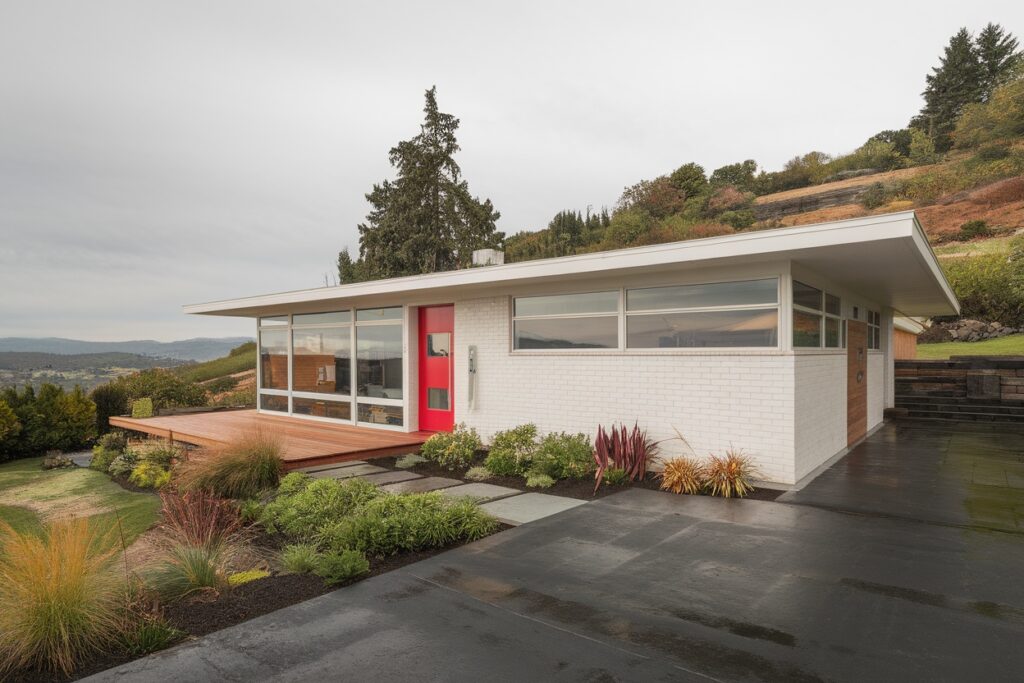Mid-century modern houses are iconic designs that emerged in the mid-20th century, characterized by clean lines, organic forms, and an emphasis on bringing the outdoors in. These homes often feature large windows, open floor plans, and a seamless flow between spaces, creating a relaxed and inviting atmosphere. With a focus on functionality and simplicity, mid-century modern architecture remains a beloved choice for homeowners and design enthusiasts alike.
Integration with Nature

Mid-century modern houses are known for their seamless connection with the outdoors. This home beautifully illustrates that concept. The large windows invite natural light and offer stunning views of the surrounding landscape.
The use of natural materials, like wood and stone, enhances the feeling of being part of nature. The earthy tones of the exterior blend harmoniously with the greenery around it. This design choice creates a cozy and inviting atmosphere.
The landscaped garden, with its carefully placed rocks and plants, complements the home. It encourages outdoor living, making it easy to enjoy the fresh air and tranquility. This integration with nature is a hallmark of mid-century modern architecture, promoting a lifestyle that values both comfort and the environment.
Landscaping and Outdoor Spaces
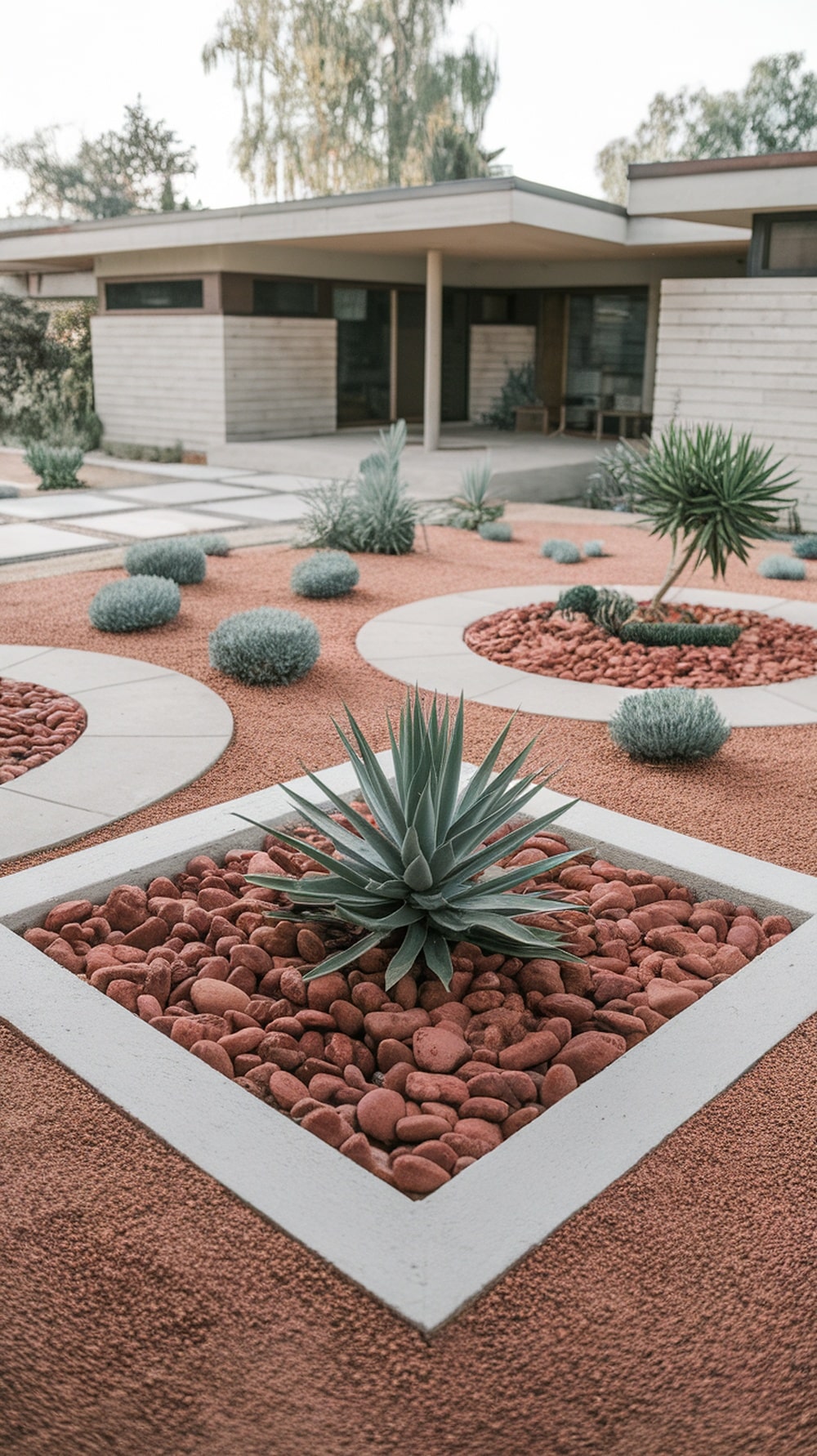
The landscaping of a mid-century modern house often reflects simplicity and harmony with nature. In this image, you can see a well-thought-out outdoor space that complements the architectural style of the home. The clean lines and geometric shapes create a pleasing visual flow.
The use of various textures, like the smooth concrete and the rough red rocks, adds depth to the landscape. The plants are carefully selected to thrive in the environment while providing a pop of color and life. The agave plants stand tall, showcasing their unique shapes against the backdrop of the home.
Paths made of concrete slabs guide visitors through the space, encouraging exploration. This design not only enhances the aesthetic but also promotes a connection between the indoors and outdoors. The overall look is inviting and serene, making it a perfect retreat for relaxation or entertaining.
Furniture and Decor Trends
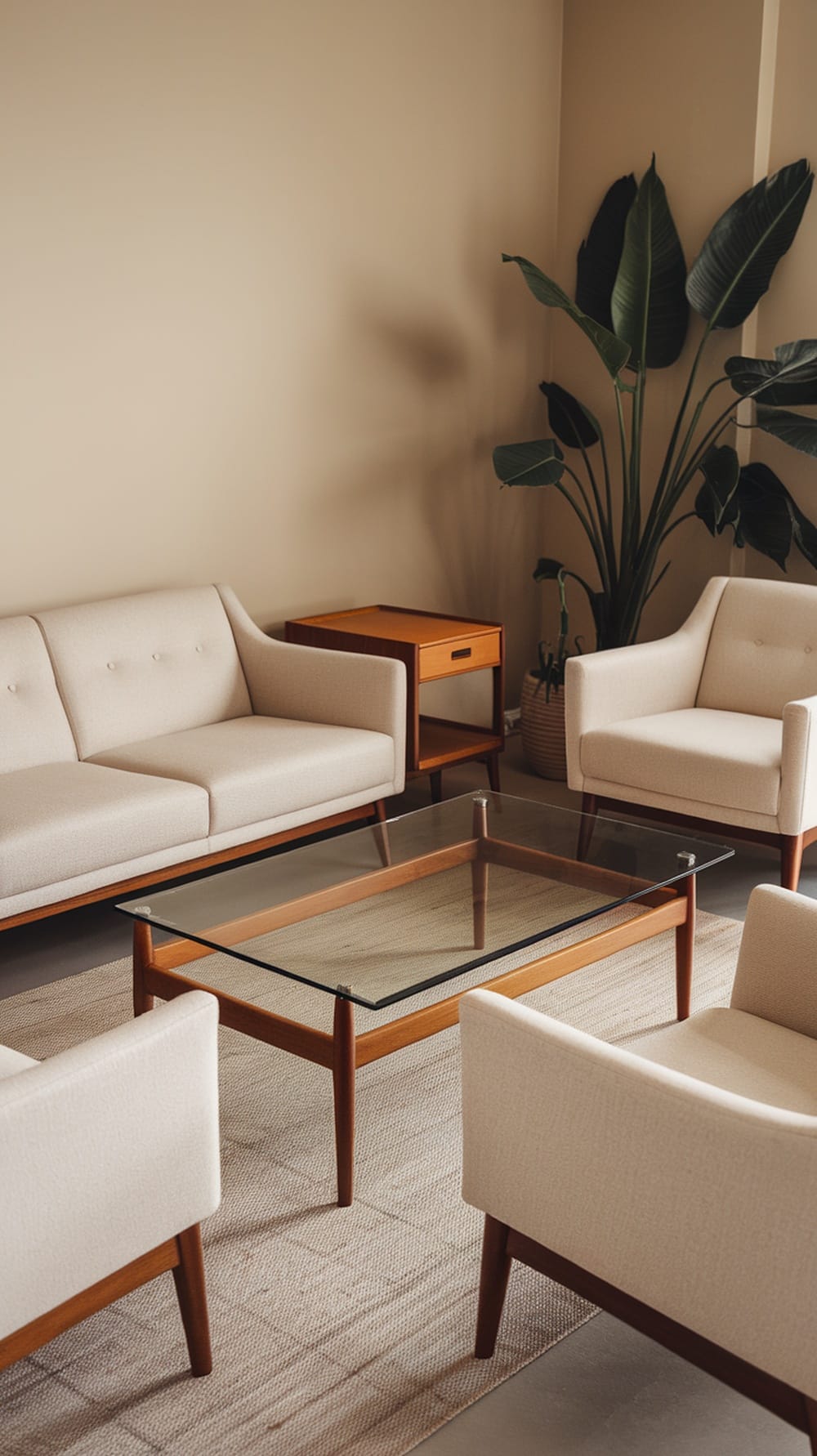
Mid-century modern design is all about clean lines and functional beauty. The furniture in this style often features organic shapes and a mix of materials. In the image, you can see a cozy seating arrangement with soft, neutral tones that create a warm and inviting atmosphere.
The sofas and chairs have a minimalist design, showcasing the elegance of simplicity. The wooden legs add a touch of warmth, while the glass coffee table keeps the space feeling open and airy. This combination is perfect for creating a relaxed yet stylish living area.
Plants are a common decor element in mid-century modern homes. They bring a bit of nature indoors, adding life and color to the space. The large leaves in the corner of the image complement the furniture beautifully, enhancing the overall aesthetic.
Textiles also play a key role in this style. The rug under the coffee table adds texture and comfort, making the space feel more inviting. Choosing the right pieces can really tie the room together and reflect your personal style.
Interior Design Aesthetics
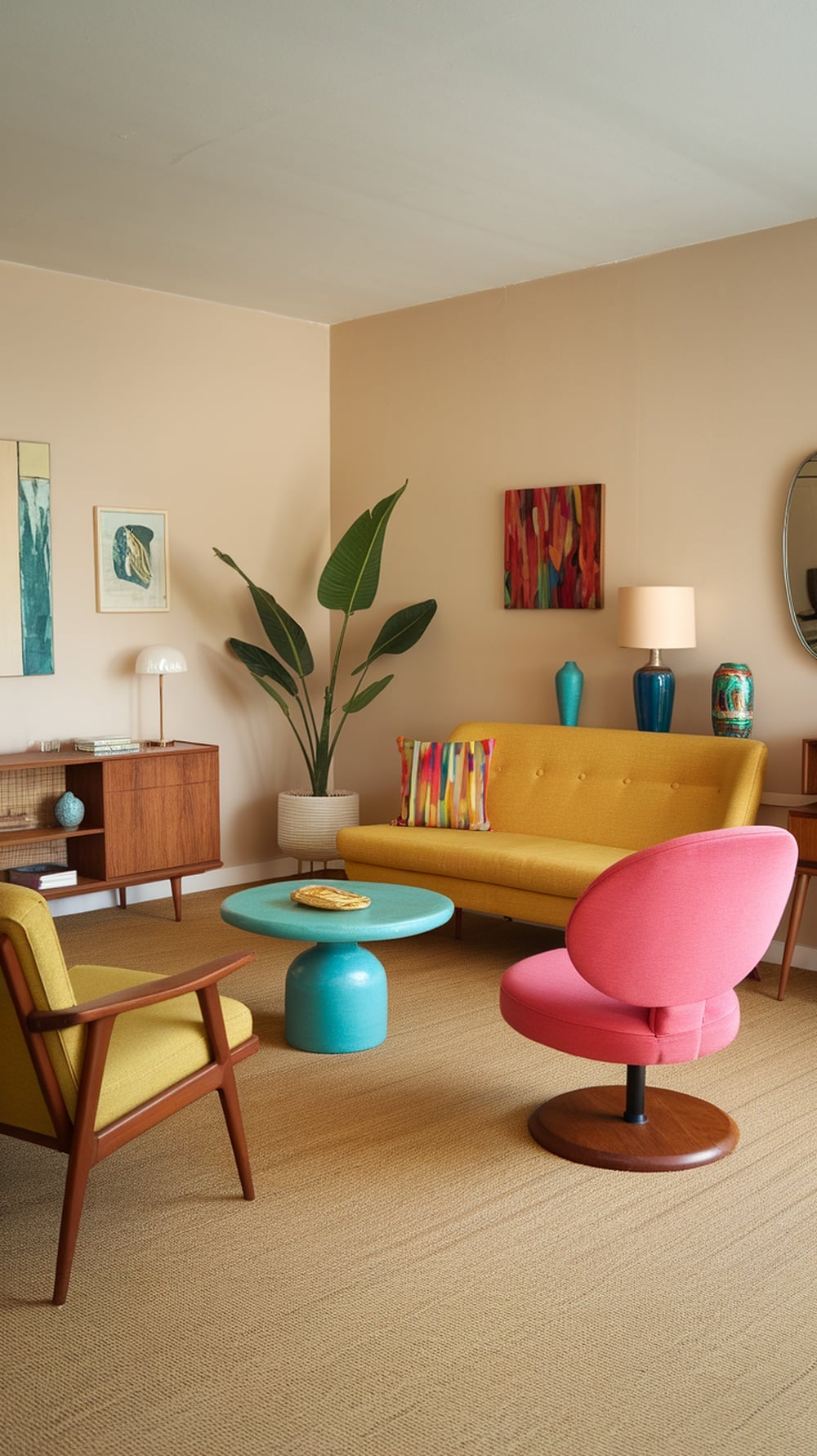
The interior of a mid-century modern house is a delightful blend of simplicity and boldness. The image showcases a living space that perfectly captures this style. Bright colors and clean lines create a cheerful atmosphere, inviting you to relax and enjoy.
The yellow sofa stands out as a focal point, bringing warmth to the room. It’s paired with a pink chair that adds a playful touch. Together, they embody the vibrant spirit of mid-century design.
Natural elements are also key in this aesthetic. The large plant in the corner adds life and a sense of connection to nature. The wooden furniture pieces, like the side table and cabinet, provide a nice contrast to the colorful upholstery.
Artwork on the walls adds personality and interest. The abstract pieces reflect the creativity of the era, while the simple shapes and forms keep the space feeling open and airy. Overall, this interior design beautifully illustrates the charm of mid-century modern style.
Iconic Architectural Features
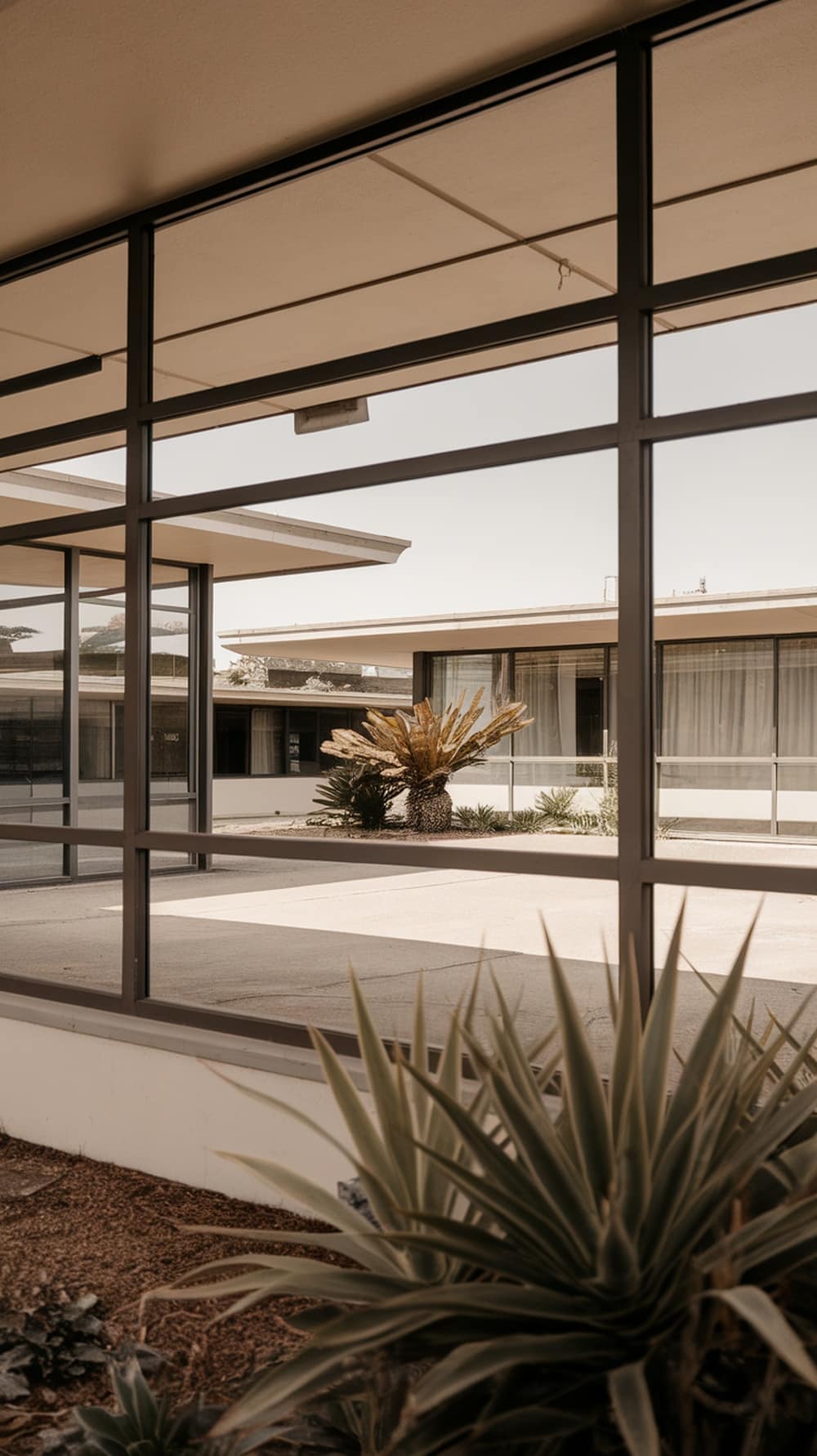
Mid-century modern houses are known for their clean lines and open spaces. The image showcases a stunning example of this style, featuring large windows that invite natural light inside. These expansive glass panels create a seamless connection between the indoor and outdoor environments.
The flat roof and geometric shapes are also key elements of mid-century modern design. They give the house a sleek, minimalist look. Notice how the landscaping complements the architecture, with carefully chosen plants that enhance the overall aesthetic.
This style often emphasizes functionality, making it perfect for modern living. The layout encourages easy movement and interaction, making it a great space for gatherings. Overall, mid-century modern houses are not just homes; they are a celebration of design and nature.
Color Palettes and Materials

Mid-century modern design shines through in its use of bold colors and natural materials. The image showcases a striking orange chair that instantly draws the eye. This vibrant hue adds a pop of energy to the space, perfectly balancing the warm wood paneling behind it.
The white sofa complements the chair, creating a fresh contrast. This combination highlights the playful yet sophisticated nature of mid-century design. The coffee table, with its unique pattern, adds an organic touch, showcasing the era’s love for geometric shapes and textures.
Natural elements play a key role here. The plants introduce a lively green, bringing a bit of nature indoors. This connection to the outdoors is a hallmark of mid-century modern homes, where large windows and open spaces often invite the outside in.
Materials like wood, fabric, and metal are thoughtfully combined. The sleek lines of the lamp and furniture pieces reflect the minimalist approach of the time, focusing on functionality without sacrificing style. This blend of colors and materials creates a warm, inviting atmosphere that is both timeless and contemporary.
Lighting Design Innovations
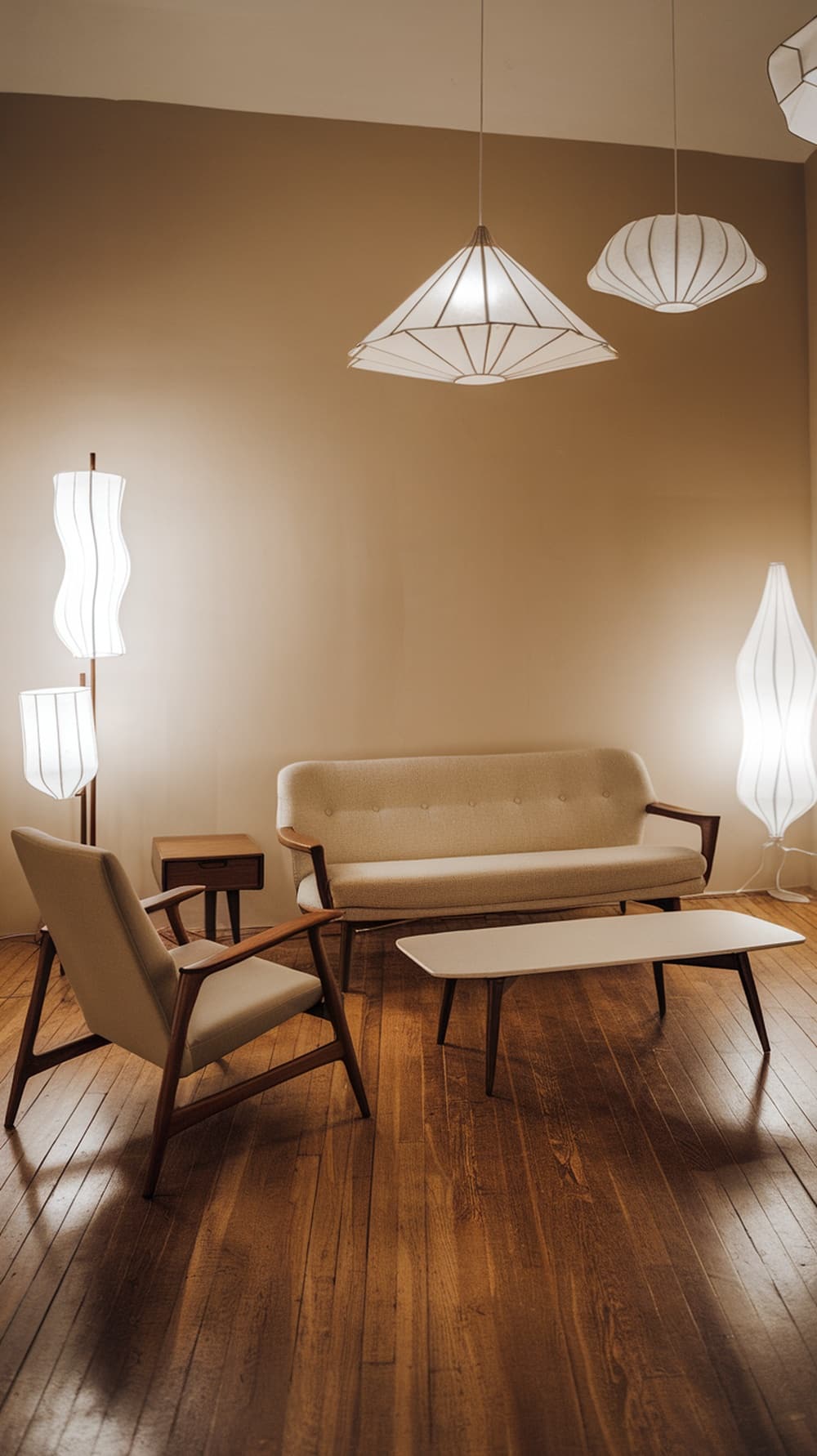
In mid-century modern homes, lighting plays a key role in creating a warm and inviting atmosphere. The image showcases a cozy living space featuring unique light fixtures that highlight this design philosophy.
The pendant lights hanging from the ceiling are not just functional; they are artistic pieces that draw the eye. Their shapes and materials reflect the era’s emphasis on organic forms and simplicity. This approach to lighting design enhances the overall aesthetic of the room.
On the floor, the standing lamps add layers of light, creating a soft glow that complements the wooden furniture. The combination of different light sources helps to define the space while providing ample illumination for various activities.
Overall, the lighting in this mid-century modern setting demonstrates how thoughtful design can elevate a room, making it both stylish and comfortable.
Sustainable Design Practices
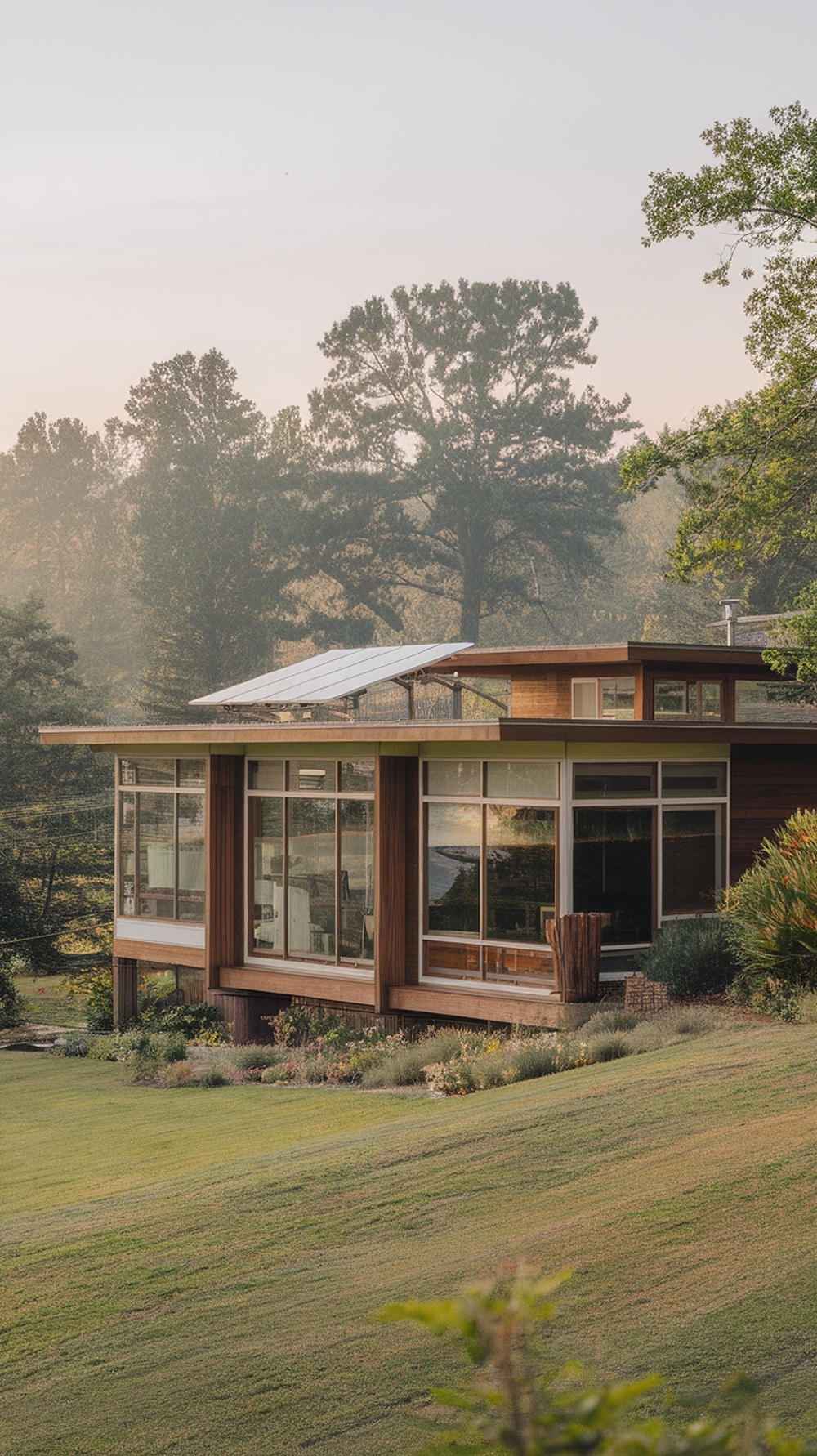
This mid-century modern house showcases a perfect blend of style and sustainability. The large windows invite natural light, reducing the need for artificial lighting during the day. This design choice not only enhances the aesthetic but also promotes energy efficiency.
The roof features solar panels, harnessing renewable energy. This is a smart move for homeowners looking to lower their carbon footprint. Solar energy can significantly cut down on electricity costs, making it a win-win for both the environment and the wallet.
The use of natural materials, like wood, adds to the home’s charm while being eco-friendly. These materials often require less energy to produce compared to synthetic options. Plus, they blend beautifully with the surrounding landscape, creating a seamless connection with nature.
Landscaping plays a role in sustainability too. Native plants require less water and maintenance, making them an excellent choice for eco-conscious homeowners. This house is not just a living space; it’s a statement about living harmoniously with the environment.
Historical Context and Influence

The mid-century modern house style emerged in the mid-20th century, reflecting a shift in design philosophy. This period saw a move away from ornate details to a focus on simplicity and functionality. The image showcases various houses from different decades, highlighting this evolution.
Starting from the early 1900s, homes featured more traditional designs. As we move through the decades, we see a gradual embrace of open spaces and large windows. By the 1950s, the style became more pronounced, with clean lines and integration with nature. The houses in the image illustrate how mid-century modern architecture prioritized connection to the outdoors.
In the 2000s, the influence of mid-century modern can still be seen. Many contemporary homes borrow elements from this style, proving its lasting impact. The design principles established during this time continue to inspire architects and homeowners alike, making mid-century modern a beloved choice.

